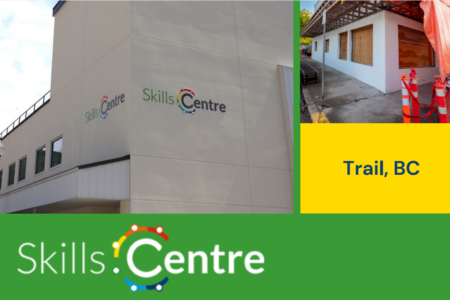Regional approach to economic development possible first step towards amalgamation
There’s a new group in town that is now officially off and running on a mission to inject new life into the economic picture of this area and their plan of doing it on a region wide basis could be the initial building block towards a regional municipality.
We can now add another acronym to our lexicon with the launch of the Lower Columbia Initiatives (LCI).Born out of the Lower Columbia Community Development Team (LCCDT), this non-profit corporation is headed up by executive director Sandi Santori and his executive assistant, Tara Howse. It is operating as a wholly owned subsidiary of the LCCDT and has been contracted by the Regional District of Kootenay Boundary (RDKB) to provide economic development activities in this region.
Its two main goals are building and growing new business while building upon existing knowledge as well as taking the lead on projects considered by the group to be significant economic drivers for the region.
Although they did not want to release information on projects they are working on to the media at this stage, Santori did hint that the Trail airport might be a targeted project, with the goal being to increase the airport’s size both physically as well as in terms of passenger volume.
“Communities, by and large, are in support of what we’re doing,” said Santori. “When one good thing happens economically, it reverberate throughout the entire region. All of our initiatives will be based on a regional basis–not that we couldn’t help an individual community if that was a need and we felt that.”
Crossing municipal boundaries and working with multiple communities on a non-profit corporation that is funded in part by all municipalities in the region, given the recent history in this area, may not be an easy task for the LCI. And they realize this.
“We understand that collaboration and working in partnerships with community and stakeholders is critical,” added Santori. “We also understand that that may not always be the easiest thing to achieve. We may have to redefine what a community is. There needs to be discussion and debate in the best interest of respective communities, yes–but we hope that when it comes to things like economic development, we don’t let those other debates discriminate against the economic development initiatives that serve in the best interests of the region.”
A major piece of the group’s work will be continually meeting with all councils and stakeholders to strategically integrate the priorities of the various communities into their work.
In addition to municipal cooperation, the group also acknowledges other significant challenges our region faces and welcomes them as opportunities rather than barriers.
“No question–in the Lower Columbia region we have an ageing population which creates challenges, noted Santori. “It also creates some opportunities so long as we can put together something that responds to their needs and wants. That doesn’t have to mean industry, but attracting people to live in our area is an economic driver and people who move here want our products and services, even and perhaps especially the older generation. That could be an area of growth for us rather than a barrier.”
How the LCI will tackle the economic development picture as a whole is currently being worked out. Of course, economic development in large part is selling the region: selling the region as a place for existing businesses to stay and grow, for new businesses and industry to move in as well as for existing families to stay and grow and attract new people to the region.
In creating the new marketing and communications campaign, a first step for the LCI will be a regional branding exercise to put a new name and a feel to the currently used “Lower Columbia Region.’
“This is not designed to take away from the Golden City or Mountain Bike Capital of Canada or Silver City or Home of Champions but rather to brand the Lower Columbia region by things in our priorities that creates a positive image of the region as a whole. Each community’s existing branding will remain, but we’ll be adding one overarching brand.”
During Santori’s presentation to Rossland Council this past Monday night, the LCI members agreed with Councillor Charlton who saw this as a first step towards regional amalgamation.
“Thinking about the name of what the area should be called is one of the first steps to creating a district municipality to avoid some ongoing debates we’ve had for decades in the past. A good brand for this area that everybody can buy into would be a critical first step to a district municipality.”
Optimism and hopes for the group’s potential success at this early stage are high; however, they are not putting the cart before the horse and are intentionally being cautious about their potential impact on the region and are looking for the small building blocks as much or more so than the silver bullet.
“At end of day be realistic [in terms] of expectations,” continued Santori. “In the past the region–and I relate back to when I was in the council seats–has been were waiting for the big home run of a 150 or 200 job industry coming to the region creating employment. We have to be prepared that our progress down the road might be made up of bunts and singles with two employees here or four new jobs there. Whether you get 100 jobs at one time or 100 jobs through 50 businesses adding two jobs that’s still 100 jobs for the region.”
A new regional identity, new jobs, industry, and population growth are expected all to come in time. To kick us off down that road, however, the group is also going to work on bringing more of a positive vibe and feel back to this area and looking at the positives rather than the negatives that get bandied about when things don’t move forward.
“At the end of the day we are our own worst critics when we talk about what we have in this region,” noted Santori. “There are not too many regions of this size where you can choose to live on a farm and ranch land, a resort town or an industrial city all within a few miles of one another. We have a lot of good things going for us. Now it’s a matter of building on those existing assets to get to the next level where we want to be.’


























